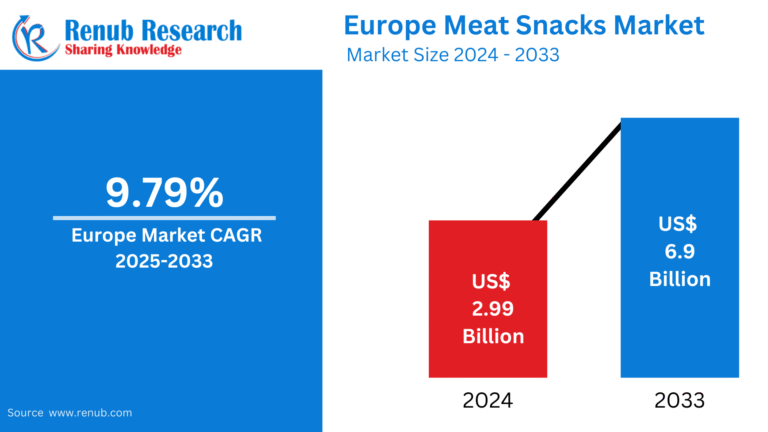Global Service Robotics Market Analysis
The Global Service Robotics Market is poised for explosive growth, projected to reach US$ 359,773.2 Million by 2032, up from US$ 21,260.9 Million in 2023, representing an impressive CAGR of 36.39% between 2024 and 2032. This surge in market size is driven by increasing technological advancements, enhanced robot capabilities, and rising demand for service robots across various industries and households. Service robots, which help perform tasks ranging from domestic chores to complex industrial operations, are gaining prominence due to their ability to improve efficiency, reduce human error, and cut operational costs.
Request a free sample copy of the report: https://www.renub.com/service-robotics-market-p.php
Service Robotics Market Outlook
Service robots are machines that assist humans by performing helpful tasks. The market for service robotics is primarily segmented into personal and professional use robots, which are further categorized into residential and industrial/commercial applications.
- Residential Service Robots: These robots are primarily designed for indoor and personal use. They include devices like robotic vacuum cleaners, floor moppers, and personal assistants. The rise of IoT-based devices in homes, coupled with the growing affordability and functionality of these robots, is fueling their adoption.
- Industrial/Commercial Service Robots: These robots are used for tasks in sectors like healthcare, logistics, manufacturing, and retail. From surgical robots in healthcare to automated inventory management systems in warehouses, industrial robots are designed to enhance productivity, safety, and accuracy, significantly reducing the need for manual labor in risky or repetitive tasks.
Key Market Drivers
- Technological Advancements and Lower Costs
One of the primary drivers behind the rapid growth of the service robotics market is the continuous reduction in the cost of manufacturing robots. Over the past few decades, the cost of building robots has decreased significantly, with the average cost dropping by nearly 50% in real terms over the last 30 years. This trend, combined with advancements in automation, is making service robots more accessible for businesses and consumers alike.
- Growing Demand for Automation
As industries worldwide seek to reduce labor costs and improve operational efficiency, the demand for automated systems is growing. The use of robots to handle mundane, repetitive, or hazardous tasks is now common across sectors like manufacturing, logistics, healthcare, and hospitality. In particular, industrial service robots are helping to streamline operations in factories, warehouses, and hospitals.
- Government Investments in Robotics
Governments around the world are investing heavily in robotics research and development. Initiatives like the National Artificial Intelligence Research and Development Strategy in the United States and China’s Key Special Program on Intelligent Robots are fueling the growth of robotics technologies. These programs are expected to contribute USD 11.5 trillion to intelligent technologies by 2028, boosting the development and commercialization of service robots.
- Healthcare Industry Demand
The healthcare industry is one of the fastest-growing sectors for service robotics, with applications in surgery, patient monitoring, and rehabilitation. Surgical robots, such as the da Vinci Surgical System, are transforming the way surgeries are performed, offering enhanced precision, reduced recovery times, and lower risk of complications. Additionally, robots are being increasingly used for elderly care, enabling more effective monitoring and assistance for aging populations.
- Increased Adoption in Emerging Markets
As service robots become more affordable, emerging markets, particularly in Asia-Pacific, are witnessing rapid growth in adoption. Countries like China, Japan, and India are leading the charge, driven by their large consumer bases, labor shortages, and strong government support for automation and robotics.
Regional Insights: Asia Pacific
The Asia-Pacific region is expected to be one of the fastest-growing markets for service robots, driven by countries like China, Japan, South Korea, and India. The region’s robust consumer base, combined with rapid advancements in robotics technology, is propelling market growth.
- China is leading the way, with ambitious plans to dominate the global robotics market. The Chinese government has made robotics and AI key pillars of its industrial policy, aiming to improve automation and reduce dependence on human labor in manufacturing. The rise of the elderly population in China is also contributing to the growing demand for care robots.
- Japan is known for its advanced robotic technologies, particularly in healthcare and elderly care. The country is increasingly using robots for a range of applications, from assisting the elderly to performing complex surgeries.
- India is also witnessing an increase in robotics adoption, with applications ranging from military robotics to industrial robots in manufacturing. The Indian government has announced plans to invest in military robotics and is preparing to launch advanced robotic systems to enhance defense capabilities.
In addition, the aging populations in many of these countries are expected to drive the demand for robots that can assist with healthcare and personal care, creating a strong growth trajectory for the market.
Market Segmentation and Key Applications
- Domestic Robots: Robots such as vacuum cleaners (e.g., iRobot’s Roomba), lawn mowers, and personal assistants are gaining popularity for household use. With the growing demand for IoT integration and smart homes, these robots are expected to continue to grow in popularity, especially as prices continue to fall.
- Industrial Robots: These include robots used in factories, warehouses, and for specialized tasks like medical surgeries or robotic-assisted rehabilitation. For example, robots like Stryker’s Mako Total Knee 2.0 are transforming the way surgeries are performed, offering new levels of precision and faster recovery times for patients.
- Logistics and Delivery Robots: Automated robots are increasingly used for material handling, delivery, and other logistics tasks. Companies like Amazon are leading the charge with automated warehouses and delivery drones. These robots help reduce labor costs and improve delivery speeds, providing a competitive edge in the e-commerce space.
Global Service Robotics Company Analysis
Leading players in the service robotics market include:
- KUKA: A global leader in industrial robotics, KUKA is expanding its footprint in the service robotics market, particularly in healthcare and logistics.
- iRobot Corporation: Known for its consumer robots, such as the Roomba robotic vacuum cleaner, iRobot is a dominant force in the residential robotics market.
- Intuitive Surgical Inc.: This company is pioneering the use of robotics in the surgical field, offering solutions like the da Vinci Surgical System.
- Panasonic Corporation: A significant player in both industrial and personal service robots, Panasonic is expanding its robotics solutions across a variety of sectors.
- ABB Ltd.: ABB provides a wide range of robotics for industrial and commercial applications, with a strong presence in automation and AI-based systems.
- Stryker Corporation: Stryker specializes in medical robotics, particularly in the field of surgical robots, and continues to lead innovations in healthcare automation.
Recent Developments in the Service Robotics Market
- May 2024 – EveryBot’s Acquisition of Highcore
EveryBot, known for its robotic cleaning solutions, expanded its product portfolio by acquiring Highcore, an AI robotics company. This strategic acquisition will help EveryBot enter the personal mobility market, specifically focusing on AI-driven electric wheelchairs for the mobility-impaired population.
- January 2024 – Acieta Acquisition by Angeles Equity Partners
Acieta, a prominent robotics integrator, was acquired by Angeles Equity Partners. The deal aims to strengthen capabilities in robotic automation for industries such as agriculture, manufacturing, and construction.
- March 2023 – Mako Total Knee 2.0 by Stryker
Stryker introduced the Mako Total Knee 2.0 at the AAOS 2023 Annual Meeting. The system offers improved user experience for surgeons and better outcomes for patients undergoing Total Knee Arthroplasty.
About the Company:
Renub Research is a Market Research and Consulting Company. We have more than 15 years of experience especially in international Business-to-Business Researches, Surveys and Consulting. We provide a wide range of business research solutions that helps companies in making better business decisions. We partner with clients in all sectors and regions to identify their highest-value opportunities, address their most critical challenges, and transform their businesses. Our wide clientele comprises major players in Healthcare, Travel and Tourism, Food Beverages, Power Energy, Information Technology, Telecom Internet, Chemical, Logistics Automotive, Consumer Goods Retail, Building, and Construction, Agriculture. Our core team is comprised of experienced people holding graduate, postgraduate, and Ph.D. degrees in Finance, Marketing, Human Resource, Bio-Technology, Medicine, Information Technology, Environmental Science, and many more.
Media Contact:
Company Name: Renub Research
Contact Person: Rajat Gupta, Marketing Manager
Phone No: +91-120-421-9822 (IND) | +1-478-202-3244 (USA)
Email: mailto:rajat@renub.com














